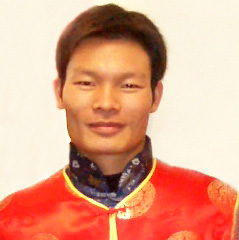Qiao Family Compound Introduction and Ways to Tour
When bulit
The Pingyao Qiao Family Compound is a well-preserved ancient Chinese residential complex located in the Pingyao County of Shanxi Province, China. It was built in the Ming Dynasty (1368-1644) and serves as a vivid representation of the traditional Chinese architectural style and lifestyle of the time.
How many rooms
The compound covers an area of approximately 60,000 square meters and contains a large number of buildings, including the main house, auxiliary buildings, archways, and courtyards. The main house is a two-story building with a total of 72 rooms and halls, showcasing the wealth and power of the Qiao family.
What to see
The interior of the buildings is decorated with intricate carvings and sculptures, depicting scenes from Chinese mythology and historical events. The walls and roofs are adorned with colorful glazed tiles, creating a beautiful and harmonious appearance.
The courtyards in the compound are surrounded by walls and connected by archways, creating a sense of privacy and seclusion from the outside world. There are also many small gardens and rockeries within the compound, providing a peaceful and tranquil environment for the residents.
UNESCO
The Pingyao Qiao Family Compound is a popular tourist destination and a testament to the rich cultural heritage of China. It is recognized as a UNESCO World Heritage Site and is considered one of the best-preserved ancient residential compounds in China.
Who built it and why
The Pingyao Qiao Family Compound was built by the Qiao family as a symbol of their wealth and status during the Qing dynasty (1644-1912). The compound served as the family's residence and demonstrated their prosperity and power to the local community.
Qiao Family Compound travel guide
The Qiao Family Compound is a well-preserved traditional Chinese courtyard in the Shanxi. It is considered one of the finest examples of traditional Chinese residential architecture and has been designated a national cultural heritage site.
Here's a guide for travelers visiting the Qiao Family Compound:
Location: The Qiao Family Compound is located in Qiaojiacun Village, Hu county, Shanxi province.
Opening hours: It is open daily from 8:00 am to 5:00 pm.
Admission fee: The entrance fee is around CNY 80 per person.
Getting there: The easiest way to reach the Qiao Family Compound is by taking a taxi from Hu county, which is the closest city. Alternatively, you can also take a bus from Taiyuan, the capital of Shanxi province.
Highlights: Visitors can explore the different traditional courtyard and buildings within the compound, including the main hall, ancestral hall, and residential buildings. Visitors can also learn about the history and culture of traditional Chinese residential architecture and the Qiao family.
Tips: It's a good idea to wear comfortable walking shoes and bring plenty of water, as there is a lot of ground to cover. Additionally, the site can get crowded, so it's best to visit early in the morning or late in the afternoon to avoid the crowds.
GREAT FAMILY CHINA TOUR
JULY 2024 We wanted to thank Grace at China Culture tour for organizing a great tour of China. We enjoyed our Beijing - Xian-Chengdu -Guilin -Yangshuo - Shanghai trip. Our local guides Bruce in Beijing, Susan in Xian, Jane in Chengdu, Mike in Guilin and Mary in Shanghai took care of us…read more details »
Teng Han L from SINGAPORE
Ready to Create a Unique Dream Travel?
